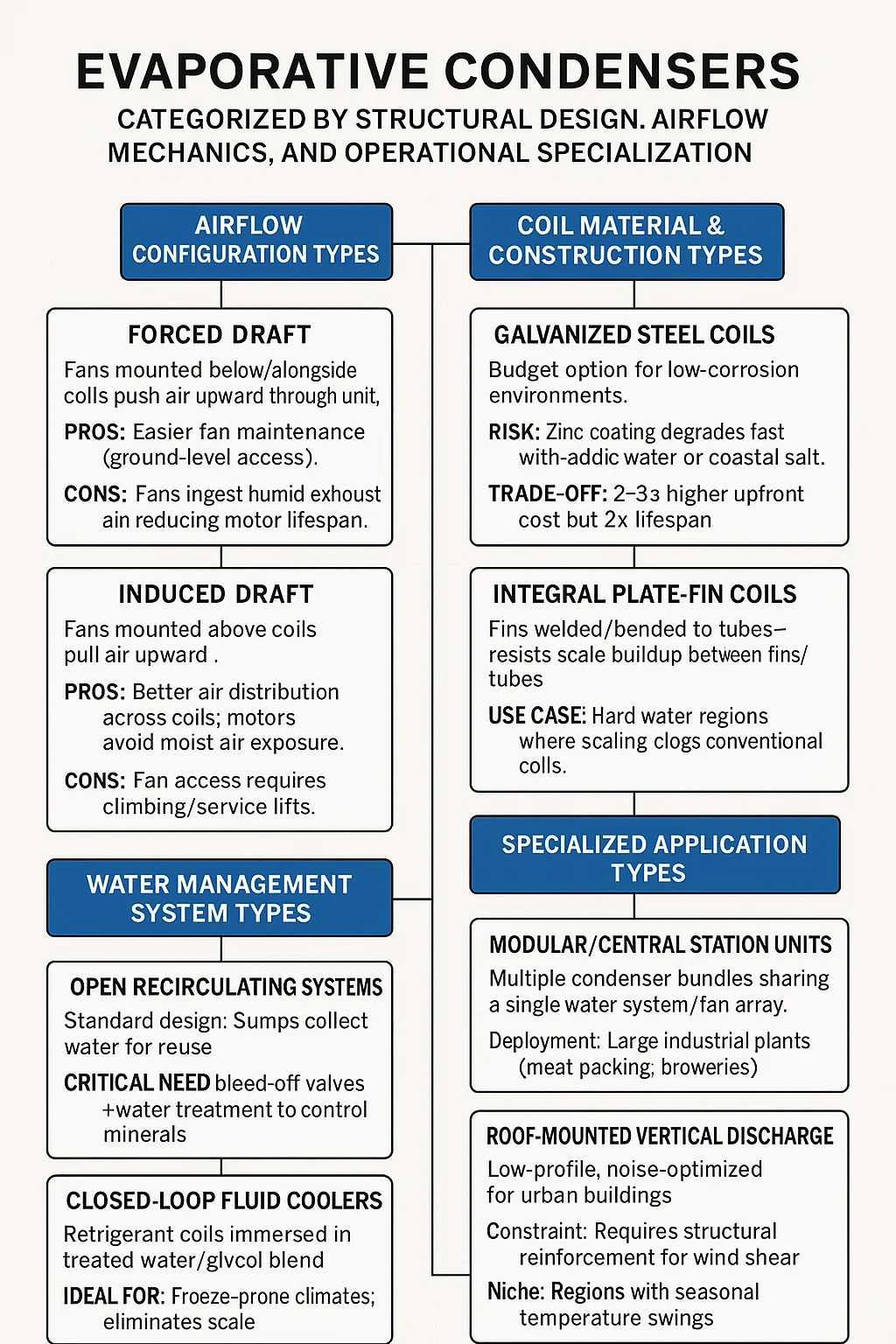Evaporative condensers are categorized by structural design, airflow mechanics, and operational specialization. Below is a field-focused breakdown of common types:
Content
1. Airflow Configuration Types
•Forced Draft
Fans mounted below/alongside coils push air upward through the unit.
Pros: Easier fan maintenance (ground-level access).
Cons: Fans ingest humid exhaust air, reducing motor lifespan.
•Induced Draft
Fans mounted above coils pull air upward.
Pros: Better air distribution across coils; motors avoid moist air exposure.
Cons: Fan access requires climbing/service lifts.
2. Coil Material & Construction Types
•Galvanized Steel Coils
Budget option for low-corrosion environments.
Risk: Zinc coating degrades fast with acidic water or coastal salt.
•Stainless Steel Coils
For harsh environments (chemical plants, coastal sites).
Trade-off: 2–3× higher upfront cost but 2× lifespan.
•Integral Plate-Fin Coils
Fins welded/bonded to tubes – resists scale buildup between fins/tubes.
Use Case: Hard water regions where scaling clogs conventional coils.
3. Water Management System Types
•Open Recirculating Systems
Standard design: Sumps collect water for reuse.
Critical Need: Bleed-off valves + water treatment to control minerals.
•Closed-Loop Fluid Coolers
Refrigerant coils immersed in treated water/glycol blend.
Ideal For: Freeze-prone climates; eliminates scale but reduces efficiency.
4. Specialized Application Types
•Modular/Central Station Units
Multiple condenser bundles sharing a single water system/fan array.
Deployment: Large industrial plants (meat packing, breweries).
•Roof-Mounted Vertical Discharge
Low-profile, noise-optimized for urban buildings.
Constraint: Requires structural reinforcement for wind shear.
•Hybrid Dry/Wet Units
Operates as air-cooled condenser until ambient exceeds threshold, then switches to evaporative mode.
Niche: Regions with seasonal temperature swings.



 English
English عربى
عربى






